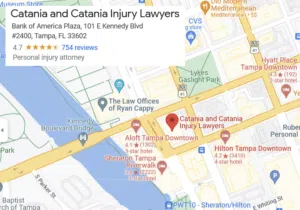
Soft tissue injuries can include any non-bone injury to the musculoskeletal system, from muscle strains to torn cartilage. These account for many common injuries after an accident.
Most soft tissue injuries will recover with medical treatment, surgery, and physical therapy. But some could result in chronic or recurring pain that could limit your ability to work and participate in the activities you enjoy.
Here is some information about soft tissue injuries and the compensation you can seek for their effects.
Table of Contents
How Do Soft Tissue Injuries Happen?
Soft tissue includes the structural tissue of the musculoskeletal system, except for the bones. Soft tissue includes:
- Muscles
- Tendons
- Ligaments
- Synovial membranes
- Fascia
- Fat tissue
- Connective tissue
The definition of soft tissue usually leaves out the organs. However, some definitions of soft tissue include the nervous system, the lymphatic system, the endocrine system, and the circulatory system.
Soft tissue injuries can result from diseases like cancer and autoimmune diseases. They can also result from trauma.
Trauma-induced soft tissue injuries can happen in a few ways:
Penetrating Injury
An object can penetrate the soft tissue. The penetrating object can tear tissue and cause bleeding. The damage can result in inflammation and tissue death.
The penetrating object can come from outside the body, such as a piece of metal or glass. It can also come from inside the body, such as a fractured bone.
Blunt Force Injury
Blunt force injuries happen after a collision between an object and soft tissue. The object doesn’t penetrate the skin. Blunt force injuries can happen when an object strikes your body. A falling object could strike your shoulder resulting in blunt force trauma. Blunt force injuries can also happen when your body strikes a solid object like the ground after a fall.
Stress
Stress injuries happen when a force acting on your body exceeds the capacity of your soft tissues. Your soft tissues stretch or tear under stress.
The stress could occur over time, like getting your arm trapped in a machine in a workplace accident. The stress could also be delivered in a short, sharp action like a collision in a pedestrian accident.
Repetitive Stress
Small stresses that do not exceed the capacity of your soft tissues can also cause soft tissue injuries when repeated. These types of soft tissue injuries commonly happen in the workplace due to overuse.
What Are the Different Types of Soft Tissue Injuries?
The variety of soft tissue in your body can lead to a wide range of soft tissue injuries. Some common soft tissue injuries include:
Sprains
Ligaments connect bones. They provide strength and flexibility to your skeleton. Sprains happen when ligaments stretch or tear.
Symptoms of sprains include:
- Pain
- Swelling
- Bruising
- Limited range of motion
- Structural instability
Sprains usually heal with rest and home treatment. Severe sprains might require physical therapy to build up the sprained ligament and the surrounding tissue that supports it. Doctors rarely operate on sprains but may consider surgery to repair a ruptured tendon.
Strains
Tendons connect muscles to bones. Strains happen when a muscle or a tendon stretches or tears.
Some symptoms of strains include:
- Pain
- Swelling
- Muscle spasms
- Weakness
You can usually treat strains at home with rest, ice, and anti-inflammatory drugs. Doctors rarely operate on strains. Instead, they will prescribe physical therapy.
Torn Cartilage
Cartilage lines joints. It cushions the joints and prevents the bones from grinding together. Trauma and repetitive stress can tear the cartilage of a joint.
Common symptoms of a cartilage injury include:
- Pain
- Inflammation
- Limited joint motion
Treatment usually starts with anti-inflammatory drugs and physical therapy. Severe injuries might require surgery to remove damaged cartilage or replace the joint.
Fascia Injury
Fascia surrounds muscles. The fascia can tear under stress. For example, when trauma causes a muscle strain, the fascia can tear when the underlying muscle stretches.
Repetitive stress can irritate the facia. Some of the most common workplace injuries result from inflammation of the fascia, including plantar fasciitis and iliotibial band friction syndrome. Inflammation of the fascia can also contribute to carpal tunnel syndrome.
When the fascia becomes inflamed, it can swell and compress nearby nerves. This can cause searing pain in the affected area.
Fascia injuries usually heal with rest and inflammatory medication.
What are the Risk Factors for Soft Tissue Injuries?
Many accidents and work activities can lead to soft tissue injuries, including:
Car Accidents
Car accidents can tear muscles, tendons, ligaments, cartilage, and fascia. You can also injure soft tissue when you impact the doorpost, side window, console, steering wheel, airbag, or seat belt during a collision.
Motorcycle Accidents
Unlike automobile drivers, motorcycle operators do not have a steel passenger compartment to protect them in a crash. Motorcycle accidents can tear soft tissue in the back, neck, arms, legs, and torso. They can also result in lacerations and abrasions that penetrate deep into the soft tissue.
Workplace Incidents
Accidents in the workplace can lead to soft tissue injury. Falling objects, slip and falls, and falls from a height can damage soft tissue.
Repetitive actions like lifting, typing, walking, and standing can stress the soft tissue, leading to inflammation and pain in the soft tissue.
How Do I Recover Compensation for Soft Tissue Injuries?
Compensation for soft tissue injuries will depend on the circumstances of the injury. Claims for workplace injuries, including repetitive stress injuries, usually go through the workers’ compensation system.
Your employer’s workers’ comp insurer will pay all medical expenses and partial wage benefits if you were injured on the job or in the course of your duties for work.
Florida uses a no-fault system for car insurance, so claims for car accident injuries usually start with your auto insurer. However, if the losses due to a car accident exceed your no-fault benefits, you will be able to pursue a lawsuit against the at-fault driver. This can help you to claim all of the compensation that you’re owed for your injuries.
If your injury resulted from another type of accident, the at-fault party might have liability insurance to cover your expenses. You can also pursue a lawsuit seeking damages to cover your medical expenses, lost income, and pain and suffering.
Contact a Tampa Personal Injury Lawyer for Help
To learn about your options, contact Catania and Catania Injury Lawyers for a free consultation with a Baltimore personal injury lawyer. We’ll talk about the circumstances surrounding your soft tissue injury and explore your legal options.




